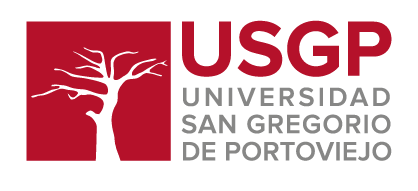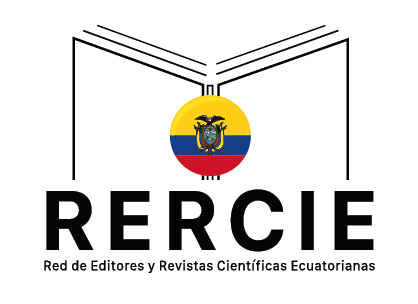Cartografía de la co-creación de valor en estudios sobre la educación superior
DOI:
https://doi.org/10.36097/rsan.v1i56.2535Palabras clave:
co-creación de valor, calidad, universidad, educación superior, almétricasResumen
La co-creación de valor en la educación superior es un concepto que se centra en el proceso de colaboración activa y participativa entre todos los actores involucrados en el sistema universitario, con la finalidad de generar valor de manera conjunta. La presente investigación tuvo como objetivo realizar una cartografía detallada del corpus de conocimiento relacionado con la co-creación de valor en la educación superior según estudios de la Web of Science entre el periodo 2012-2022. Se llevó a cabo una investigación de tipo descriptiva y retrospectiva, basado en la metodología de revisión sistemática exploratoria, en publicaciones seleccionadas según criterios de pertinencia y relevancia. Los resultados del análisis ayudaron a identificar tendencias y patrones de la co-creación de valor en el ámbito universitario, evidenciando que la calidad, la satisfacción y el compromiso son ejes emergentes entre los investigadores del campo y que estudian los procesos de creación conjunta de valor. La investigación propone algunos ámbitos de análisis y líneas de investigación especializada que pueden ser importantes abordar en futuros trabajos. Temas clave que emergen de la investigación con el propósito de fortalecer la gestión institucional de las universidades.
Citas
Alonso, I., & Arandia, M. (2017). 15 años desde la Declaración de Bolonia. Desarrollo, situación actual y retos del Espacio Europeo de Educación Superior. Revista Iberoamericana de Educación Superior, 8(23), 199–213. çhttp://www.scielo.org.mx/scielo.php?script=sci_arttext&pid=S2007-28722017000300199
Andreu, L., Sánchez, I., & Mele, C. (2010). Value co-creation among retailers and consumers: New insights into the furniture market. Journal of Retailing and Consumer Services, 17(4), 241–250. https://doi.org/10.1016/j.jretconser.2010.02.001
Astin, W., A. (1991). ¿Por qué no intentar otras formas de medir la calidad?. Revista de La Educación Superior, ANUIES, México, 78, 27–41.
Bettencourt, L. A. (1997). Customer voluntary performance: Customers as partners in service delivery. Journal of Retailing, 73(3), 383–406. https://doi.org/10.1016/S0022-4359(97)90024-5
Bovill, C. (2014). An investigation of co-created curricula within higher education in the UK, Ireland and the USA. Innovations in Education and Teaching International, 51(1), 15–25. https://doi.org/10.1080/14703297.2013.770264
Brady, M. P. (2013). Multiple roles of student and instructor in university teaching and learning processes. International Journal of Management Education, 11(2), 93–106. https://doi.org/10.1016/j.ijme.2013.03.002
Bunce, L., Baird, A., & Jones, S. E. (2017). The student-as-consumer approach in higher education and its effects on academic performance. Studies in Higher Education, 42(11), 1958–1978. https://doi.org/10.1080/03075079.2015.1127908
Cavallone, M., Ciasullo, M. V., Douglas, J., & Palumbo, R. (2021). Framing higher education quality from a business perspective: setting the conditions for value co-creation. Studiesin Higher Education, 46(6), 1099–1111. https://doi.org/10.1080/03075079.2019.1672644
De Chernatony, L., Harris, F., & Dall’olmo Riley, F. (2000). Added value: its nature, roles and sustainability. European Journal of Marketing, 34(1/2), 39–56. https://doi.org/10.1108/03090560010306197
Días Sobrinho, J. (2007). Acreditación de la educación superior en América Latina y el Caribe. En La Educación Superior En El Mundo (pp. 282–295). Universitat Politècnica de Catalunya. https://core.ac.uk/download/pdf/41781784.pdf
Díaz-Méndez, M., & Gummesson, E. (2012). Value co-creation and university teaching quality: Consequences for the European Higher Education Area (EHEA). Journal of Service Management, 23(4), 571–592. https://doi.org/10.1108/09564231211260422
Dollinger, M., Lodge, J., & Coates, H. (2018). Co-creation in higher education: towards a conceptual model. Journal of Marketing for Higher Education, 28(2). https://doi.org/10.1080/08841241.2018.1466756
Elsharnouby, T. H. (2015). Student co-creation behavior in higher education: the role of satisfaction with the university experience. Journal of Marketing for Higher Education, 25(2), 238–262. https://doi.org/10.1080/08841241.2015.1059919
Gallarza, M. G., Šerić, M., & Cuadrado, M. (2017). Trading off benefits and costs in higher education: A qualitative research with international incoming students. International Journal of Management Education, 15(3), 456–469. https://doi.org/10.1016/j.ijme.2017.08.001
González López, I. (2006). Dimensiones de evaluación de la calidad universitaria en el Espacio Europeo de Educación Superior", Electronic Journal of Research in Education Psychology, 4(10), 445–468. https://doi.org/10.25115/ejrep.v4i10.1212
Grönroos, C. (2008). Service logic revisited: Who creates value? And who co-creates?. European Business Review, 20(4), 298–314. https://doi.org/10.1108/09555340810886585
Grönroos, C. (2011). Value co-creation in service logic: A critical analysis. Marketing Theory, 11(3), 279–301. https://doi.org/10.1177/147059311140817
Grönroos, C., & Voima, P. (2013). Critical service logic: Making sense of value creation and co-creation. Journal of the Academy of Marketing Science, 41(2), 133–150. https://doi.org/10.1007/s11747-012-0308-3
Groth, M. (2005). Customers as good soldiers: Examining citizenship behaviors in internet service deliveries. Journal of Management, 31(1), 7–27. https://doi.org/10.1177/0149206304271375
Gvaramadze, I. (2008). From Quality Assurance to Quality Enhancement in. European Journal of Education, 43(4), 443–455. https://doi.org/10.1111/j.1465-3435.2008.00376.x
Hamby, A., & Brinberg, D. (2016). International Service Learning as Social Value Cocreation. Journal of Nonprofit and Public Sector Marketing, 28(3), 209–233. https://doi.org/10.1080/10495142.2015.1015383
Helgesen, Ø., & Nesset, E. (2007). Images, Satisfaction and Antecedents: Drivers of Student Loyalty? A Case Study of a Norwegian University College. Corporate Reputation Review, 10(1), 38–59. https://doi.org/10.1057/palgrave.crr.1550037
Karpen, I. O., Bove, L. L., & Lukas, B. A. (2012). Linking Service-Dominant Logic and Strategic Business Practice: A Conceptual Model of a Service-Dominant Orientation. Journal of Service Research, 15(1), 21–38. https://doi.org/10.1177/1094670511425697
Lenton, P. (2015). Economics of Education Review Determining student satisfaction : An economic analysis of the National Student Survey. Economics of Education Review, 47, 118–127. https://doi.org/10.1016/j.econedurev.2015.05.001
Lin Ling, Huang, Z., Othman, B., & Luo, Y. (2020). Let ’ s make it better : An updated model interpreting international student satisfaction in China based on PLS-SEM approach. PLoS One, 15(7), 1–13. https://doi.org/10.1371/journal.pone.0233546
Lusch, R. F., Vargo, S. L., & O’brien, M. (2007). Competing through service: Insights from service-dominant logic. Journal of Retailing, 83(1), 5–18. https://doi.org/10.1016/j.jretai.2006.10.002
Magni, D., Pezzi, A., & Vrontis, D. (2020). Towards a framework of students’ co-creation behaviour in higher education institutions. International Journal of Managerial and Financial Accounting, 12(2), 119–148. https://doi.org/10.1504/IJMFA.2020.109129
Marzo, M., Pedraja, M., & Rivera, P. (2007). The customer concept in university services : a classification. International Review on Public and Non Profit Marketing, 4(December), 65–80. https://doi.org/10.1007/BF03180755
Moreno De Castro, B., & Calderón, M. (2017). Comportamiento del Consumidor en la Co-Creación de Valor y su relación con la Satisfacción en el entorno universitario : una aplicación a la Universidad de Ibagué (Colombia ). Revista Facultad de Ciencias Económicas: Investigación y Reflexión, XXV(1), 203–217. https://www.redalyc.org/articulo.oa?id=90949035014
Narang, R. (2012). How do management students perceive the quality of education in public institutions?. Quality Assurance in Education, 20(4), 357–371. https://doi.org/10.1108/09684881211263993
Newbert, S. (2007). Empirical research on the resource-based view of the firm: an assessment and suggestions for future research. Strategic management journal, 28 (2), 121-146. https://doi.org/10.1002/smj.573
Newman, M., & Gough, D. (2020). Systematic reviews in education research: Methodology, perspectives, and application. En O. Zawacki-Richter, M. Kerres, S. Bedenlier, M. Bond y K. Buntins (Eds.), Systematic reviews in educational research (pp 3-22). Springer. https://doi.org/10.1007/978-3-658-27602-7_1
Normann, R. (2001). Reframing business: When the map changes the landscape. Wiley.
O’neill, M. A., & Palmer, A. (2004). Importance-performance analysis: A useful tool for directing continuous quality improvement in higher education. Quality Assurance in Education, 12(1), 39–52. https://doi.org/10.1108/09684880410517423
Organización para la Cooperación y el Desarrollo Económico [OECD]. (2019). Education at a Glance 2019: OECD Indicators. https://doi.org/10.1787/19991487
Park, S. Y., & Vargo, S. L. (2012). The service-dominant logic approach to tourism marketing strategy. Strategic marketing in tourism services, 231.
Payne, A. F., Storbacka, K., & Frow, P. (2008). Managing the co-creation of value. Journal of the Academy of Marketing Science, 36(1), 83–96. https://doi.org/10.1007/s11747-007-0070-0
Prahalad, C. K., & Ramaswamy, V. (2004). Co-creation experiencies: The next practice in value creation. Journal of Interactive Marketing, 18(3), 5–14. https://doi.org/10.1002/dir.20015
Prahalad, C. K., & Ramaswamy, V. (2000). Competence, Co-opting Customer. Harvad Business Review, 78(1), 79–90. https://doi.org/10.2217/cns.13.23
Rajah, E., Marshall, R., & Nam, I. (2008). Relationship glue: Customers and marketers co-creating a purchase experience. Advances in Consumer Research, 35, 367–373.
Ramaswamy, V., & Ozcan, K. (2018). What is co-creation? An interactional creation framework and its implications for value creation. Journal of Business Research, 84, 196–205. https://doi.org/10.1016/j.jbusres.2017.11.027
Ramírez-Fernández, R., Machado-Licona, J. & Fernández-Ramírez O.E. (2019). Calidad en la educación universitaria, desde el programa de ingeniería de sistemas: una visión cualitativa de la educación superior. Revista Científica Anfibios, 2(2), 41–50. Retrieved from https://doi.org/10.37979/afb.2019v2n2.49
Ribes, G., María, P., & Odette, P. (2017). Revisión sistemática de literatura de las variables clave del proceso de Co-creación en las instituciones de Educación Superior. TEC Empresarial, 11(3), 41–53. https://www.scielo.sa.cr/pdf/tec/v11n3/1659-3359-tec-11-03-00041.pdf
Rodríguez-Ponce, E., & Pedraja-Rejas, L. (2013). Dirección estratégica y calidad de las Universidades: Un estudio xploratorio desde Chile. Interciencia, 38(1), 35–41. https://www.interciencia.net/wp-content/uploads/2017/12/035-RODRIGUEZ-7.pdf
Ruiz-Molina, M.-E., Gallarza, M., & Gil-Saura, I. (2018). A review of value drivers in service settings. Journal of Services Marketing, JSM-11-2017-0399. https://doi.org/10.1108/JSM-11-2017-0399
Ruskin, J., & Bilous, R. H. (2020). A tripartite framework for extending university-student co-creation to include workplace partners in the work-integrated learning context. Higher Education Research and Development, 39(4), 806–820. https://doi.org/10.1080/07294360.2019.1693519
Saarijärvi, H., Kannan, P., & Kuusela, H. (2013). Value co-creation: theoretical approaches and practical implications", European Business Review, 25(1), 6–19. https://doi.org/10.1108/09555341311287718
Sanahuja, G. y Ribes, G. (2015). Effects of Business Internships on Students, Em-ployers, and Higher Education Institutions: A Systematic Review. Journal of Em-ployment Counseling, 52 (3), 121-130. https://doi.org/10.1002/joec.12010
Sánchez-González, C., & Prada-Araque, D. (2018). La co-creación y los nuevos retos de generación de valor que generan las organizaciones. Criterio Libre, 16(29), 165–182. Retrieved from https://dialnet.unirioja.es/servlet/articulo?codigo=6836642
Senlle, A., & Gutiérrez, N. (2005). Calidad en los servicios educativos. Diaz de Santos. https://www.editdiazdesantos.com/wwwdat/pdf/9788479786670.pdf
Smørvik, K. K., & Vespestad, M. K. (2020). Bridging marketing and higher education : resource integration, co-creation and student learning. Journal of Marketing for Higher Education, 30(2), 256-270.https://doi.org/10.1080/08841241.2020.1728465
Sultan, P., & Wong, H. Y. (2013). Antecedents and consequences of service quality in a higher education context: A qualitative research approach. Quality Assurance in Education, 21(1), 70–95. https://doi.org/10.1108/09684881311293070
Timmis, S. (2012). Constant companions: Instant messaging conversations as sustainable supportive study structures amongst undergraduate peers. Computers and Education, 59(1), 3–18. https://doi.org/10.1016/j.compedu.2011.09.026
Van Riel, A. C. R., Calabretta, G., Driessen, P. H., Hillebrand, B., Humphreys, A., Krafft, M., & Beckers, S. F. M. (2013). Consumer perceptions of service constellations: Implications for service innovation. Journal of Service Management, 24(3), 314–329. https://doi.org/10.1108/09564231311327012
Vargo, S. L., & Lusch, R. F. (2004). Evolving to a New Dominant Logic for Marketing. Journal of Marketing, 68(January), 1–17. https://doi.org/10.1509/jmkg.68.1.1.24036
Vargo, S. L., & Lusch, R. F. (2008). Service-dominant logic: continuing the evolution. Journal of the Academy of Marketing Science, 36(1), 1–10. https://doi.org/10.1007/s11747-007-0069-6
Villarroel, C. (2005). Gerencia, planificación y evaluación universitarias. Educere, 9(31), 513–522. http://www.redalyc.org/articulo.oa?id=35603112
Wikström, S., & Normann, R. (1994). Knowledge and Value2. Routledge.
Williams, B. (2020). Dimensions & VOSViewer bibliometrics in the reference interview. Code4Lib Journal, (47). https://journal.code4lib.org/articles/14964
Woodall, T. (2003). Conceptualization “Value for the Customer”: An Attributional Analysis. Academy of Marketing Science Review, 12(1), 1–42. https://core.ac.uk/outputs/88927
Yi, Y., & Gong, T. (2013). Customer value co-creation behavior: Scale development and validation. Journal of Business Research, 66(9), 1279–1284. https://doi.org/10.1016/j.jbusres.2012.02.026
Yi, Y., Nataraajan, R., & Gong, T. (2011). Customer participation and citizenship behavioral influences on employee performance, satisfaction, commitment, and turnover intention. Journal of Business Research, 64(1), 87–95. https://doi.org/10.1016/j.jbusres.2009.12.007
Descargas
Publicado
Cómo citar
Número
Sección
Licencia
Derechos de autor 2023 Katty Loor Ávila, José Antonio Pedraza-Rodríguez, Leonor M. Pérez-Naranjo

Esta obra está bajo una licencia internacional Creative Commons Atribución-NoComercial-SinDerivadas 4.0.
 Esta obra está bajo una Licencia Creative Commons Atribución-NoComercial-SinDerivadas 4.0 Internacional (CC BY-NC-ND 4.0).
Esta obra está bajo una Licencia Creative Commons Atribución-NoComercial-SinDerivadas 4.0 Internacional (CC BY-NC-ND 4.0).
















